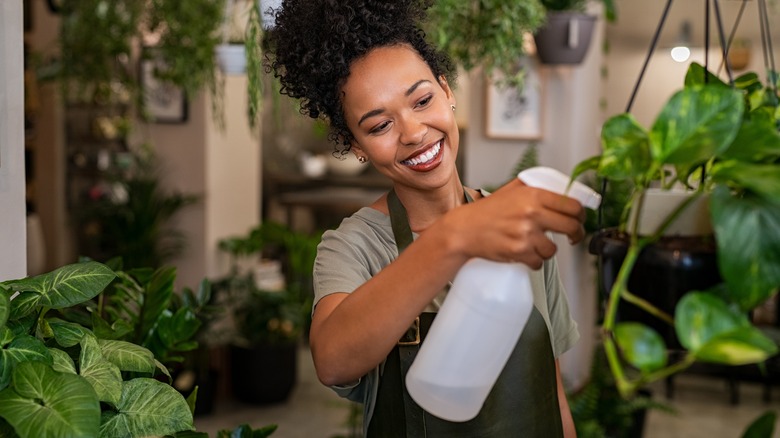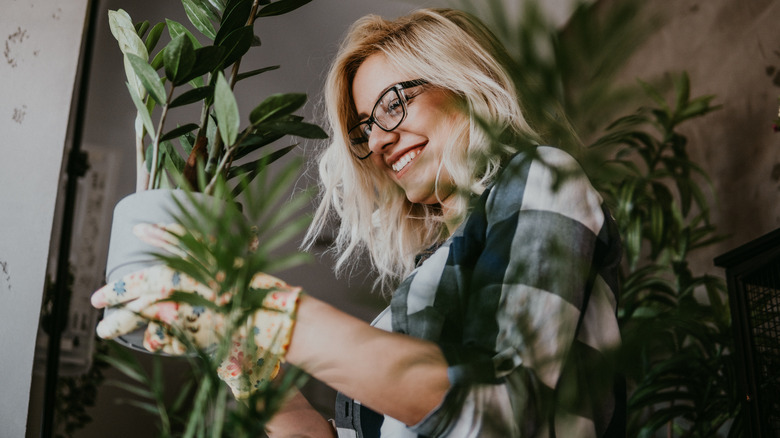Hydrogen Peroxide Is The Secret Ingredient For A Happy Houseplant
Bringing the beauty of nature into our homes, houseplants are a wonderful addition to any living space. However, maintaining their lush and vibrant appearance can be a challenge. Fortunately, hydrogen peroxide can provide numerous benefits for indoor plants beyond its typical usage. Hydrogen peroxide is a natural disinfectant and oxidizer, making it a potent weapon against common plant pests and pathogens. It inhibits the growth of harmful bacteria and fungi, such as root rot. It can also eliminate fungus gnats from houseplant soil, eliminating these pesky intruders without having to use toxic chemicals.
Hydrogen peroxide also helps improve soil aeration and drainage, which is great for indoor plants. It breaks down into water and oxygen, which helps to create a more porous and well-structured soil environment. This improves water retention and prevents waterlogged conditions, reducing the risk of root rot and other soil-borne diseases. It can be used as a gentler alternative to traditional pesticides and treatments, making it a safe choice for indoor plants.
Diluting and applying hydrogen peroxide
To get started, purchase a bottle of standard 3% hydrogen peroxide from your local pharmacy or grocery store. This concentration is safe for most houseplants when used correctly. You'll need a spray bottle for foliage applications, while a watering can with a narrow spout will help you deliver the solution directly to your plant's root zone via soil drenching.
To oxygenate the soil and promote root health, create a solution of one part hydrogen peroxide to two parts water. This diluted solution is perfect for soil drenching, as it ensures that the plant's root system receives the required oxygen and prevents root rot. While applying the mixture directly to the soil, avoid contact with the leaves and stems. To prevent pests and diseases, apply the mixture as a spray onto the leaves. This solution helps protect against insects and harmful fungi and bacteria. Gently mist the solution over the foliage, ensuring both sides of the leaves are covered.
Tips and precautions
To keep your houseplants healthy and thriving, it's important to remember that hydrogen peroxide is just one aspect of plant care. Along with using hydrogen peroxide treatments, it's best to regularly check your plants for any signs of pests, diseases, or nutrient deficiencies. Additionally, pruning dead or yellowing leaves, ensuring sufficient sunlight, and maintaining appropriate humidity levels can all contribute to your plant's overall well-being.
It's important to maintain a balance when using hydrogen peroxide in your plant care regimen. Although it can provide several advantages, too much of it can cause unintended harm. If you use high concentrations of hydrogen peroxide regularly, it can damage beneficial soil microorganisms and delicate plant tissues. To avoid this, you can alternate between hydrogen peroxide treatments and other natural plant care solutions such as neem oil or organic compost tea. Experiment with different solutions to find what works best for your specific plants.

